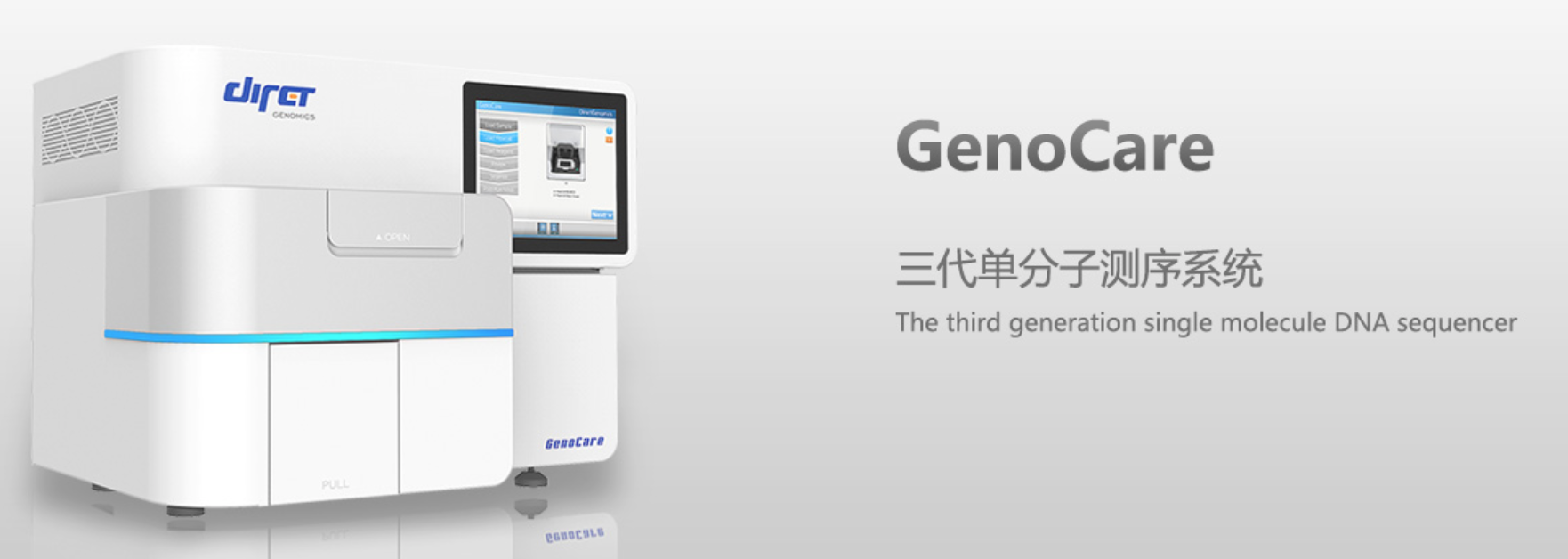Direct Genomics
Business
Direct Genomics was founded in 2014 [2] in Shenzhen. Their approach uses IP first explored at US DNA sequencing company Helicos (which went bankrupt in 2012). The website states that they have raised ~29M USD [1]. Other sources suggest that Cosun Venture Capital have invested ~34M USD in April 2018. I can find no other investments by Cosun Venture Capital. I’ve not seen references to other investors (aside from some government grant funding).
Technology
The Direct Genomics is, by all accounts, a reboot of the Helicos technology. Many of the original Helicos sequencers are now owned by SeqLL who keep them running as a service business. They have a nice video on their site which describes the platform which seems largely identical to what is proposed by Direct Genomics.
In the Helicos approach a flow cell is covered with anchored polyT single stranded DNA. The fragments you want to sequence are prepared with a polyA tail and hybridise with the polyA fragments. This gives you a flowcell covered with single stranded DNA.
While the specifics are different, this isn’t hugely different from what Illumina do (circa GA2->Hiseq 2000). The fragments are randomly attached to the surface.
On the Illumina platform these single molecule would then undergo amplification (cluster growth). This duplicates the single strand, creating a small cluster of identical fragments. On the Helicos/Direct Genomics platform, we just have a single strand (single molecule).
The Direct Genomics platform then sequences the strands using a sequencing-by-synthesis method. Assuming the chemistry hasn’t been upgraded since the Helicos, they still use a single dye. This means that rather than being able to flow in all 4 bases at once, they need flow them in one at a time. The Helicos virtual terminator technology performs the same purpose as the Illumina reversible terminators, and prevents multiple incorporations.
Why they don’t use 4 different dyes is a bit of an open question, some posts suggest potential IP issues [6]. I wonder if the terminators are not that efficient, and significant potential for multiple incorporation remains, incorporating a single base at a time might help limit this.
The Helicos/Direct Genomics technology is almost a single molecule implementation of the Solexa approach (with of course significant chemistry differences). It’s relatively well known that Solexa also tried single molecule approaches [5] before abandoning them because clusters worked so much better.
The Helicos single molecule approach worked (but only generated very short reads of 25+bps). What exactly limited read length is unclear to me. . It seems likely that continued illumination might eventually cause templates to “fall off” the flowcell or cause other damage. Illumina reads also fade with read length so the issue isn’t unique to Direct/Helicos. But with a single molecule SBS approach like this, any damaged caused will terminate sequencing of this fragment.
Single molecule imaging has made significant improvements in recent years. Direct Genomics has this advantage in their favour. One report suggests they’ve been able to achieve 200bp reads [2] though no word on error rates.
Their’s also one other key difference with Direct. They don’t appear to be going after the whole genome sequencing market. Rather than using polyT sequences on the flowcell, Direct design probes to target particular regions on interest in the genome. This is clearly aimed at clinical applications, where they can create flow cells that target mutations of interest.
They’ve certainly raised a bunch of cash, and it will be interesting to see how things play out this time.
Notes
[1]
http://www.directgenomics.com/index.php/portal/js_article/newsdetail/id/34
“This product is the result of five years of hard work by the science team at Direct Genomics, which had almost gone bankrupt twice due to shortages in funds,” said He, who tapped into the upstream sector of the sequencing industry in 2012 after finishing his postdoctoral training at Stanford University.
However, thanks to the courage of venture capitalists and the generosity of the Shenzhen government in supporting startups, the company, which started with 1 million yuan (ed: ~150K USD), has raised 200 million yuan (ed: ~29M USD) for its development in recent years. The city provided 40 million yuan (ed: ~6M USD) in subsidies under the Peacock Program for the development of the company.
[2]
BioIT World article: http://www.bio-itworld.com/2015/10/29/direct-genomics-new-clinical-sequencer-revives-forgotten-dna-technology.html
[3] https://www.chinamoneynetwork.com/2018/04/19/dealshot-sequoia-capital-leads-48m-series-c-round-in-baby-products-shopping-platform-patpat
[4] Virtual Terminator paper: https://www.ncbi.nlm.nih.gov/pmc/articles/PMC2719685/
[5] Solexa originally single molecule: https://core-genomics.blogspot.com/2012/08/what-happened-to-illuminas-single.html
[6] http://seqanswers.com/forums/archive/index.php/t-20466.html
